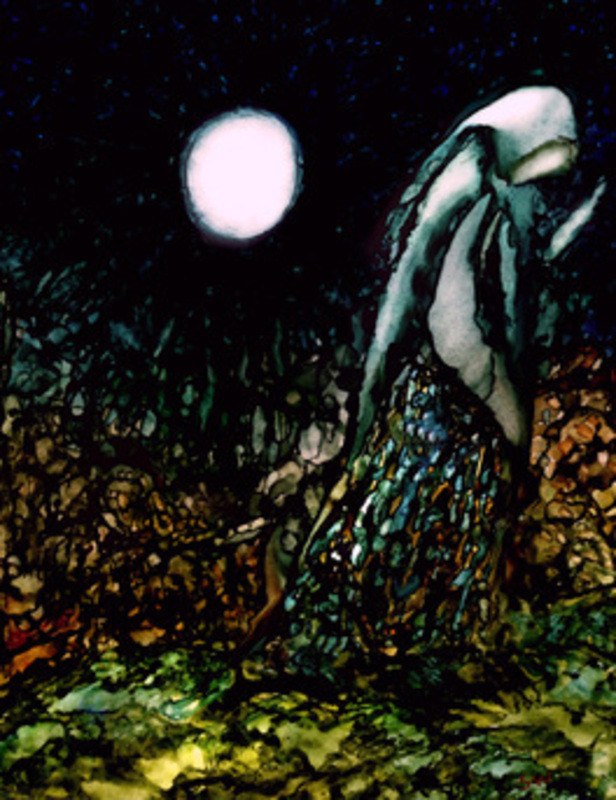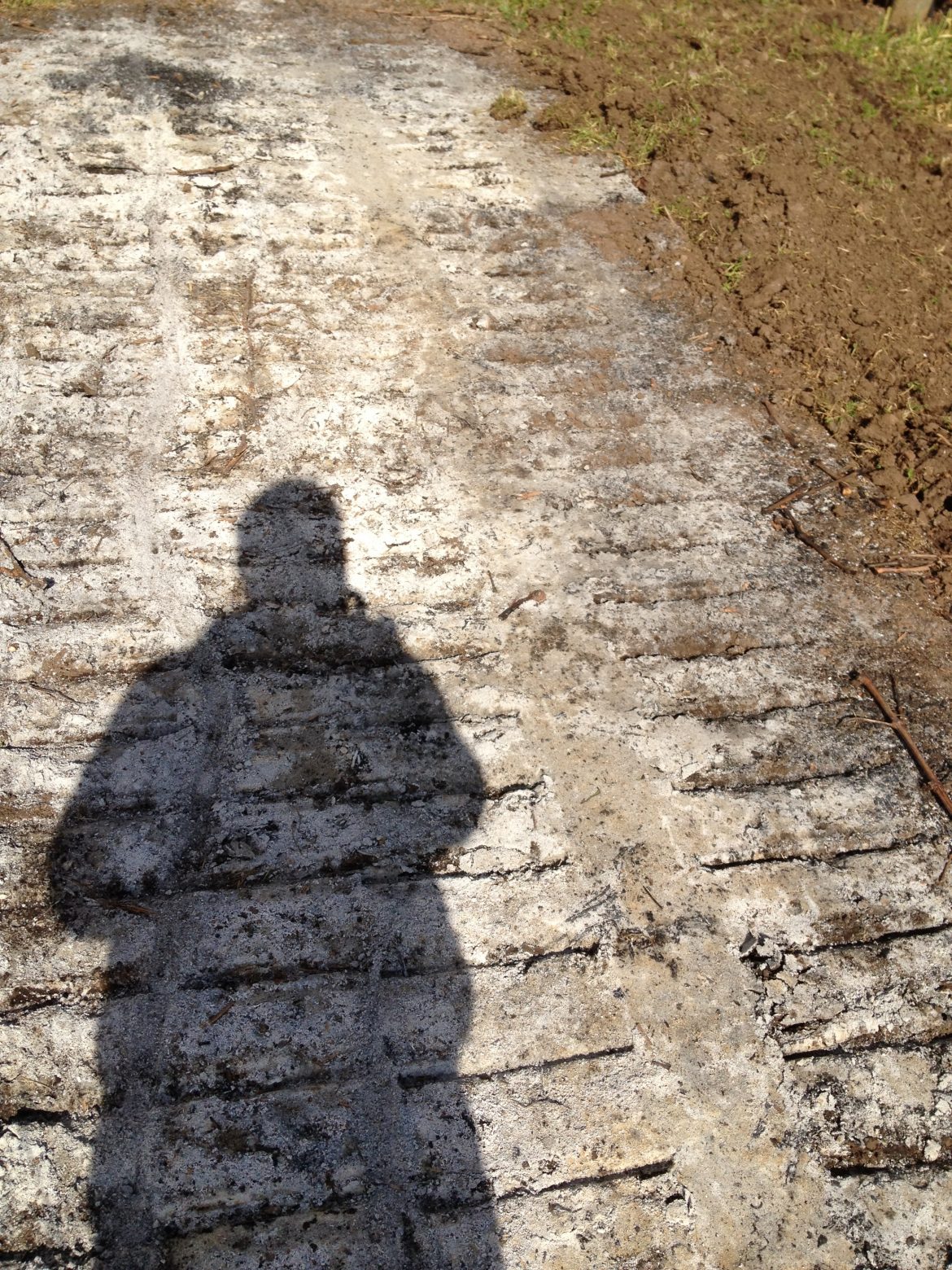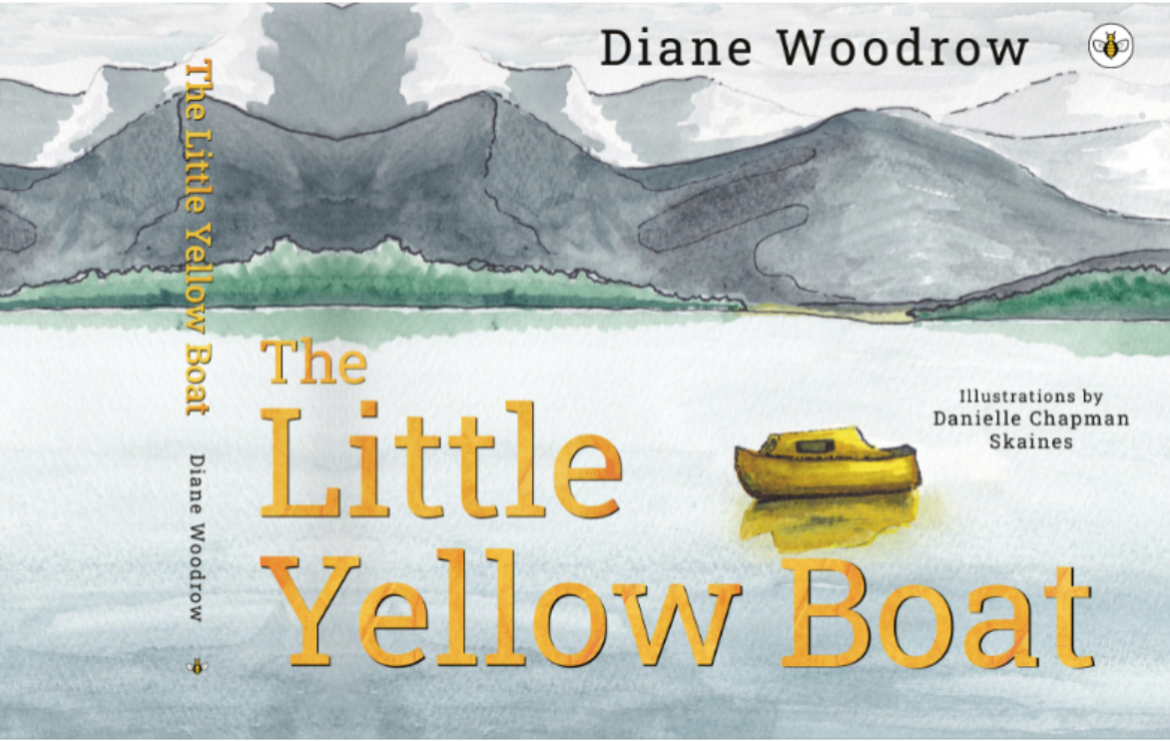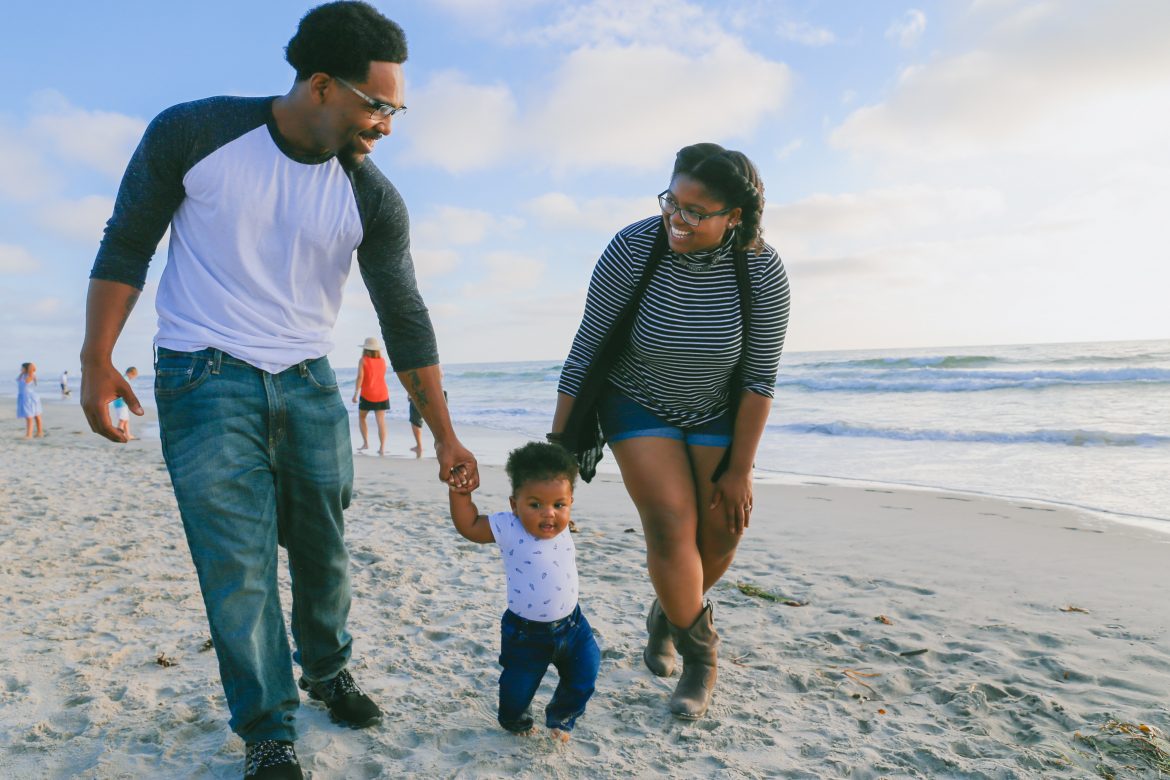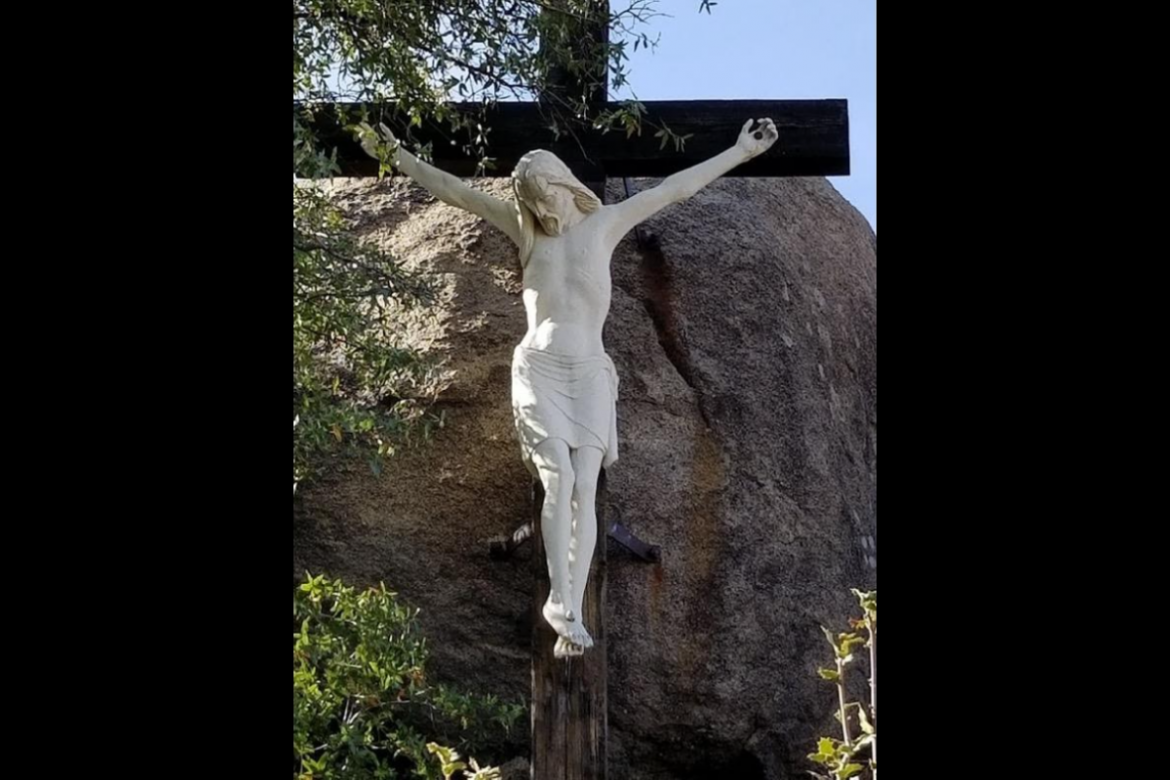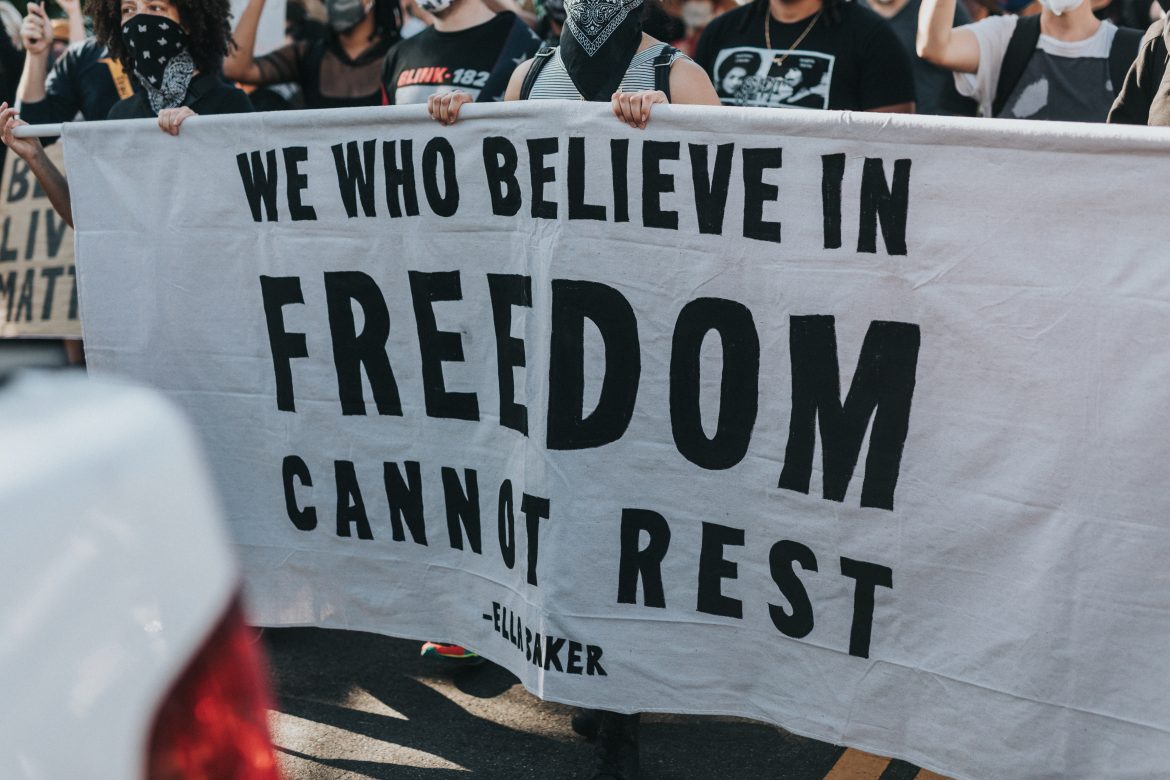This World Day of Prayer came this year at a time unlike any other most of us have ever known. Hardships of every kind are at our doorsteps and many experience a sense of general desperation and frustration. We cannot be blamed for feeling like a kitten dropped into a pen filled with legions of mice, wondering which we should tackle first.
This year’s theme of Build on a Strong Foundation has us examining our own foundations. Hate and divisiveness threaten to eat away at the bedrock of our families and communities. The plague of Corona Virus 19 and now its ever-expanding variants make us feel more like people of Moses’ time, than members of a modern, enlightened 21st century society.
We walk this pilgrimage with many others, as all countries struggle. Our communities of faith and prayer groups take on increased meaning for even the most devout. I cherish my beloved Pilgrim Walk, which hangs in my study space, by friend and artist, Stacy Wills Stall. The blank face reminds me of the personal pilgrimage I walk, within those groups, and of those who walk with me. She walks in darkness lit by the light of the moon. Her robe seems to absorb the sacred ground she trods, into her being. It represents to me the thinnest of spaces with my Lord.
Online prayers groups, gratitude sites and my writing group complete my worldwide tribe. We pray together, as we work. We pray together, over our families and friends and our countries. We pray for our governments even when we find ourselves on opposite sides of sensitive issues, because that is what we are called to do.
I study as a novitiate, with the monks of Saint Meinrad Archabbey, toward my Benedictine oblation. I chose this path to be schooled in the art of prayer and service to the God I adore.
In a lesson on Fidelity to the Spirit of the Monastic Life, Fr. Justin DuVall, OBS, Archabbot emeritus of Saint Meinrad Archabbey says, “for St. Benedict the word ‘school’ meant something more akin to a trade guild, where a young person began as an apprentice, learned the tools of the trade and practiced for life what was learned. Just as with the guild no one graduates from ‘the school of the Lord’s service.’ In lifelong learning, we practice what we’ve learned and learn what we need to practice.”
As a late starter, it would be so easy to feel so far behind but for the prayers and support I receive from my fellow pilgrims. The first World Day of Prayer theme in 1927, set by the US, was Pray Ye Therefore. Coupling this now with this current year’s theme, chosen by the South Seas people of Vanuatu: Build on a Strong Foundation, seems perfect, moving forward.
The people of Vanuatu, a tropical archipelago prone to earthquakes, cyclones, volcanic eruptions, and rising sea levels have first-hand knowledge of the importance of building a strong foundation both practically and in the faith walk the country was founded upon. The country has only been independent for 40 years. Its official motto is “in God we stand.” They collectively accept that without God they can do nothing. Oh, how I wonder how many of the world’s ills might improve if we only adopted and lived this same simple slogan both corporately and individually.
As we look to March 8th, International Women’s Day, with its theme, ‘Choose to Challenge,’ I wonder if we began by first challenging ourselves, to make every day a world day of prayer, joining with others to pray before standing not only against injustices, but for what is holy. How much it could change us? Perhaps we would turn to prayer first before we speak out, thereby asking that our words and actions be guided by divine leadership. Perhaps we would indeed seek to first understand rather than be understood in our missions, to better be able to answer the objections and arguments of those who would oppose others’ human rights.
Dear Father, as we move forward following this World Day of Prayer, may we each walk beside you. May we listen to your guidance, study your word, pray with our sisters and brothers around the world and around the corner. May we seek to aspire to what you would have us aspire to. May we trust as the people of Vanuatu do that without you, we can do nothing of good in this world. And may we have the faith of knowing that, as Nelson Mandela said, “we can in fact change the world and make it a better place.” Amen
It’s really March. I’m still a bit in denial that the calendar has flipped another page. I love new pages. I love fresh starts, but as I’ve said a lot recently, this year is different. Yesterday, we honored the one year anniversary of the tornado that hit Nashville and destroyed many homes and businesses in the neighborhoods of North Nashville, East Nashville and in counties beyond. People are still recovering and some businesses are still trying to open again. Then Covid-19 hit and it made clean up and recovery even more difficult. For many of us, the wilderness is still very present, very live with lock downs in place, restrictions that we don’t like. We still need to wear masks and social distance even as more people are able to be vaccinated. We are still walking through the wilderness, the desert, of the pandemic. We all need reminders that we are not alone on this journey. We need to remember that others have gone into the wilderness before us and provided wisdom and ways to journey there. Last week, we looked at how the Spirit compelled Jesus into the wilderness after his baptism. This week we are invited to look at how God led the children of Israel into the wilderness and then gave them a guidebook on how to live as a community, even when everything was unfamiliar. Even though their lives were now totally different from their lives in Egypt. The Old Testament reading for this Sunday is Exodus 20: 1-17, God giving Moses the Ten Commandments. This guidebook was a new way to live for people who had been slaves for 400 years! They no longer had to be afraid of each other. They were invited to worship only ONE GOD, not the many like the Egyptians had to please. They were given the amazing GIFT OF SABBATH, a day of rest which no other people had even thought of before! And this was a gift from GOD, the CREATOR of the UNIVERSE!
Before you read the passage, pause and consider what it would feel like to hear these commandments for the first time. We sometimes have baggage with them. Some of us have been slammed or even shamed by the “Shalt Nots.” My pastor, in my Seattle days, Rev. Earl Palmer calls the Ten Commandments: THE GRAND POSITIVES. And rather than reading them as negatives, or as “shalt nots,” he invites us to put them into the positive. Seeing each commandment as a GIFT and a GET TO! So take a breath, put away your memories of Sunday School and Charlton Heston and
READ THE PASSAGE with fresh ears.
EXODUS 20:1-17 NRSV
Then God spoke all these words:
2 I am the Lord your God, who brought you out of the land of Egypt, out of the house of slavery; 3 you shall have no
other gods before me.
4 You shall not make for yourself an idol, whether in the form of anything that is in heaven above, or that is on the earth beneath, or that is in the water under the earth. 5 You shall not bow down to them or worship them; for I the Lord your God am a jealous God, punishing children for the iniquity of parents, to the third and the fourth generation of those who reject me, 6 but showing steadfast love to the thousandth generation[b] of those who love me and keep my commandments.
7 You shall not make wrongful use of the name of the Lord your God, for the Lord will not acquit anyone who misuses his name.
8 Remember the sabbath day, and keep it holy. 9 Six days you shall labor and do all your work. 10 But the seventh day is a sabbath to the Lord your God; you shall not do any work—you, your son or your daughter, your male or female slave, your livestock, or the alien resident in your towns. 11 For in six days the Lord made heaven and earth, the sea, and all that is in them, but rested the seventh day; therefore the Lord blessed the sabbath day and consecrated it.
12 Honor your father and your mother, so that your days may be long in the land that the Lord your God is giving you.
13 You shall not murder.
14 You shall not commit adultery.
15 You shall not steal.
16 You shall not bear false witness against your neighbor.
17 You shall not covet your neighbor’s house; you shall not covet your neighbor’s wife, or male or female slave, or ox, or donkey, or anything that belongs to your neighbor.
What do you notice that you haven’t noticed before?
QUESTIONS TO CONSIDER and Journal from this week: Feel free to use these passage and respond in writing, art, collage, or poetry some time this week.
What is God speaking to you about TODAY as you read/listen to these passage? Take time to read them again, use different translations to hear it in fresh ways.
What questions do you have? What questions come up as you read the passage? Talk to Jesus about these things.
Guidance in the Wilderness
- We are approaching the year anniversary of the pandemic shut down. How are you feeling as this date approaches? How are you processing this wilderness anniversary? What would you like to do to process or acknowledge this anniversary?
- Consider the wilderness of that the children of Israel were wandering through as a large group of slaves. What were some of the issues they had?
- God used a pillar of fire and cloud to guide the children of Israel on their way through the wilderness. Moses had lived in this part of the wilderness for a long time as a shepherd. He knew where he was and wasn’t afraid of the desert. How have you been guided through the wilderness of 2020 and 2021? What has given you guidance? Who have been your guides?
- Which of the commandments are you needing to be reminded of in your life right now?
- Pastor Earl Palmer calls the Ten Commandments “The Grand Positives” putting each one into a positive phrase. Rather than a “shalt not. “
What is the gift in this to you? Which gift do you need to open? - The ten commandments are a GUIDEBOOK to help us journey through the wilderness. They are tools to help us live in community. They are not just the “I shalt nots,” but rather the gifts of “I get to”…. I get to receive the gift:
- That THE God of all Gods chose relationship with me!
God has delivered me out of slavery!
I have been set free from all the other gods! I am not required to worship… the Pharaoh, the crocodile, the cat, the serpent, the Nile, the Sun, the Moon, etc. or any modern day equivalent!
I get to rest! God is giving me permission to rest and loves me beyond my performance and productivity!
I get to honor myself and others.
I get to show love rather than hate or contempt.
I get to live in compassion and sharing rather than competition and conflict.
I get to choose to have enough.
I get to live out love because our community has concepts in place to honor each other and I no longer have to live a life of fear.
- Write out the 10 commandments as grand positives for yourself/your life.
- You are no longer slaves, you are chosen people! Why do we forget the love and care of God? Why do we forget that we are chosen?
- Many people don’t get just 40 days in the wilderness, or even only a year of a desert experience. Many people experience the wilderness for much longer due to illness, war, injustice, persecution, divorce, abuse, etc. Take some time to consider people and places you know who are in long term wilderness or desert experiences. Pray for them to have hope & healing.
- God provides good things for the children of Israel even in the wilderness: Manna, Quail, Water, their clothes didn’t wear out…. How has God provided for you lately? How has God provided you Manna in the wilderness of the pandemic and this crazy year? Take time to thank Jesus for providing for you this past year!
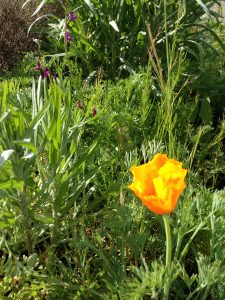
bring them into a good land
Exodus 3:7-10 The Message (MSG)
7-8 God said, “I’ve taken a good, long look at the affliction of my people in Egypt. I’ve heard their cries for deliverance from their slave masters; I know all about their pain. And now I have come down to help them, pry them loose from the grip of Egypt, get them out of that country and bring them to a good land with wide-open spaces, a land lush with milk and honey, the land of the Canaanite, the Hittite, the Amorite, the Perizzite, the Hivite, and the Jebusite.
What does your wilderness look like right now? Draw a picture or create a collage.
What does the land of milk and honey look like? What do you find hope in as you look ahead? Create a collage or write a story of what you hope for going forward in your journey towards Easter and the rest of 2021.
Remember that the Creator of the entire universe is with you in the midst of the wilderness! Jesus is with you and sees exactly where you are and how you are doing and knows what you are feeling. He suffered in the wilderness too. Receive the gift of Sabbath. It really is a gift we all need to open this Lent! Sit down somewhere outside and allow the Creator to enfold you in the beauty of nature. Watch a sunset or a sunrise. Bake some bread or some cookies and be reminded of the provision of Manna in the wilderness and how God is providing even when we don’t know the way or how long the wilderness will last!
Lord
Give us grace today to love as you love
Help us to love with extravagance.
Give us hope today for ourselves and others.
Heal our hurts and our hearts today
So we can serve and help those around us.
Help us to know that you are enough.
And help us live today and everyday in thankfulness.
For all you’ve done and for all you bless us with.
In the Name of the Father, The Son and the Holy Spirit. AMEN
©lillylewin and freerangeworship.com
IT”S NOT TO LATE TO JOIN US to reflect on the wilderness and reboot your Journey towards Easter! Retreat happening SATURDAY, MARCH 6th 10:00-12:30pm pacific time REGISTER HERE. Registration closes at 9am Pacific time Saturday, March 6th.
I think an appropriate start to a post around World Book Day would be to give myself a big shout out!
A week ago today, I published my first book. It is a children’s picture book which was accepted by the three publishers I sent it to, leaving me to pick the contract I liked best. Read more about it on my growing website or follow its Facebook page. This is my dream come true – both publishing the book and growing my own website.
World Book Day comes with lovely memories of my children eagerly awaiting the actually date to go and spend their £1 book day tokens. The tokens would arrive from our favourite home education support group a week or two early but my two would wait until it was actually World Book Day before spending them. They never bought the book that was the one especially put together for that specific World Book Day, which only cost £1. Instead they would add their own pocket money to the token and would spend ages in our favourite independent bookshop searching until they had found just the right book. It was delightful. And came only second to the delight of discovering that my daughter had taught herself to read when she was about three years old in the “book cave” I had designed for them.
Both my two are still avid book readers even though not as much as myself. I devour books. Last year, I read over 100 different books which I posted on Instagram and I’m hoping to read as many this year. For me and for my children, and most readers I know, books are a way of not just escaping but of learning about new worlds, people one wouldn’t meet in regular life, or reading about how others think and feel which taps into how we think. For myself, I come away from a book with greater wisdom about myself and others, whether historical figures or contemporary. Books give one connection to something bigger than just ordinary life, which I think has been so important in these lockdown times.
One of my exciting finds this year has been the Shelter Box Book Club, which with a monthly subscription, sends out a book from an author from a part of the world Shelter is working in. Through these books, I am going all across the world learning about diverse cultures. To learn more about my reading over the past year check out 2020 Goals – #100 Books.
As I was pondering this and knowing I was going to be posting it on to the Godspace Light, I was thinking how I could tie in God. Well, of course, Jesus is “The Word” which actually isn’t so very different to a book. I believe each reader reads a book differently. We all dive in with our own ideas, thoughts, life experiences and prejudices and read the story through that. As I pondered this, I felt that this is what we all do with Jesus if we choose to dive into him. I do not believe we can get to know Jesus without bringing our own stuff with us. I believe that is why Jesus isn’t a static word but “the living word” because we all change who he is by what we pour into him from us, and he then changes who we are by what we take away. . . .
I also think this makes God even more amazing than ever. When I wrote my book, I had an idea not just what it meant but how I hoped people would feel about it, and what they get from it. It is only a 34 page children’s picture book but I still want to sit with each person and tell them how it should be impacting their lives. Yet God released his Son, the living word, as well as the Bible, into the hands of people. People who were going to read and interpret it through their own lens. I know we sit with God and explore his word with him but I don’t believe he ever dictates to us what we should get from him.
I believe God trusts each of us to read his Son and his Bible through who we are, through our own lens, through are own life experiences. And I think that we need to trust others to read through their own life lens and listen to what each other learns. Maybe we need to read the Bible and share what we’ve learned as we would a book club that would make a difference to our growth as followers of Jesus? We should not listen to what others are learning so we can tell them where they are wrong but, as with the book club idea so that we can learn about them, learn from them – and maybe in the process, learn about ourselves just as we do when reading a well-written novel.
Register and Pay for this virtual Lenten Retreat Experience with Christine Sine and Lilly Lewin! Join live or download later! https://godspacelight.com/product/on-the-way-to-easter-rebooting-lent/
by Tom Sine
“The probability of a great summer is really increasing,” predicts Dr. David Rubin from the Children’s Hospital in Philadelphia. “In Congress, Democratic lawmakers are forging ahead to pass a 1.9 trillion stimulus package.”
Are you ready to move towards a future where we begin to control COVID-19?
Several new sources, including the New York Times, project that we could also begin to turn the corner this summer.
“Despite the uncertainties, the experts predict that the wild surge will subside in the United States sometime in the early summer. If the Biden administration can keep his promise to immunize every American adult by the end of the summer the variance should not be a match for the vaccines. We are reminded, “Even as the virus begins its swoon, people may still need to wear masks in public places and maintain social distance, because a significant percent of the population — including children — will not be immunized.”
The New York Times reminds us, “The road back to normalcy is potholed with unknowns: how well vaccines prevent further spread of the virus; whether emerging variants remain susceptible enough to the vaccines; and how quickly the world is immunized, so as to halt further evolution of the virus.
But the greatest ambiguity is human behavior. Can Americans desperate for normalcy keep wearing masks and distancing themselves from family and friends? How much longer can communities keep businesses, offices and schools closed?”
If we do start to make progress in controlling the COVID-19 pandemic, we must remember that many of our poorest neighbors and many of those in Gen Y and Z will continue to be hammered by the COVID-19 recession. Many will not be able to find jobs or pay their rent. It is essential that our churches don’t get so focused on restarting their worship programs but to help our Black and Latino neighbors to obtain the vaccine and start social enterprises to create new jobs and locate affordable housing.
Thankfully, Christian Today reports the number of churches are helping distribute COVID-19 vaccines to Black and Latino communities. “Barbara Felker, an associate pastor at Highbridge Community Church in the Bronx, also serves as a healthcare executive and arranges pop-up clinics at churches. Her company, Northwell Health, adjusted the process for distributing vaccines among minority communities by shifting from advertising on public websites about vaccination events to emailing pastors a private link to share in their neighborhood.”
A number of churches all over the United States are beginning to plan together again in place of their current Zoom worship services. I would urge them to focus first on enabling churches in poor communities to develop vaccination campaigns for many of our Black and Latino neighbors who do not currently have access to vaccines in their communities.
I would welcome the opportunity to publish some of the examples of churches reaching out to empower neighbors as the COVID recession continues to cause much suffering in 2021! Send your examples here.
Check out the review of 2020s Foresight in the PRESBYTERIAN OUTLOOK.
by Ron Friesen, photo of St. Joseph Shrine, Yarnall, AZ by Ron Friesen,
It was a nice spring day in Arizona when I arrived to see Margi, one of my hospice patients. Margi, who had been an energetic wife, mother and grandmother, was now in the last stages of her life lying in a hospital bed in her son’s family room.
We reminisced about her life of being a faithful wife and mother. Margi shared with me how she missed being with her faith family, a Roman Catholic Church in central Phoenix. We shared laughter as she shared some of her humorous encounters in her parish.
Slowly, the conversation turned to her current condition. She told me her husband had died several years ago. As we talked about death, I said to her, “Do you remember the last words Jesus spoke on the cross?” She nodded, yes. Do you remember Jesus’ last words, “Father, into your hands, I commit my spirit” (Luke 23:46, English Standard Version)? She nodded. I asked Margi, “Are you ready to say those words?”. She shook her head side to side and said, “I can’t say those words.”
I invited Margi to tell me what it would take for her to say those words. She quickly said, “I can’t forgive him.” Becoming more animated she told me that her husband had been abusive throughout their marriage. “The bastard finally died,” she said, “I can’t forgive him.”
Taking a deep breath, I gently reminded Margi of Jesus’ other words on the cross, “Father, forgive them for they know not what they do” (Luke 23:34 English Standard Version). Margi and I had a conversation about what forgiveness means. I reminded her that forgiveness does not mean that what her husband did to her was now okay. We talked about how forgiveness was removing our judgment and placing her husband in the hands of God and God’s judgment. I agreed with Margi that she could not forgive her husband, however, she could pray Jesus last words, “Father, forgive him for what he has done.” She lay quietly in her bed. “I will have pray about that.” As we parted our ways, we prayed the Lord’s prayer together, a prayer that reminds us, “Forgive us our trespasses as we forgive those who trespass against us.” Margi found new meaning in those words on that spring Arizona day.
As you read the last seven words of Jesus which resonates with you?
1. Forgiveness
“Father, forgive them, for they do not know what they are doing” (Luke 23:34)
2. Abandonment
“My God, my God, why have you forsaken me?” (Matthew 27:46)
3. Concern for those left behind
“Dear Woman, here is your son!” and “Here is your mother!” (John 19:26-27)
4. What happens after death?
“I tell you the truth, today you will be with me in paradise” (Luke 23:43)
5. Unfinished business
“I am thirsty” (John 19:28)
6. Letting go…
“Father, into Your hands I commit my spirit” (Luke 23:46)
7. Embracing the transition
“It is finished!” (John 19:30)
I invite you to find a quiet place to reflect on any or all of these words.
Check out our newly launched course, Time to Heal, with Christine Sine, Lilly Lewin, and Bethany Dearborn Hiser.
Black History Month may be over but our need to learn will never cease. Here are some suggestions from our Godspace writers and readers that can help inspire and educate us.
Suggestions from Intervarsity Press:
- All God’s Children: How Confronting Buried History Can Build Racial Solidarity by Terrence Lester. “This honest account of what it’s like to be Black in America paves the way for the church to move beyond showing support from a distance toward loving one another in long-term solidarity, advocacy, and friendship.”
- Beyond Racial Division: A Unifying Alternative to Colorblindness and Antiracism by George A. Yancey. “Avoiding unilateral decisions that close off dialogue, Yancey casts a vision for moving beyond racial alienation toward a lifestyle and movement of collaborative conversation and mutuality.”
- The Heart of Racial Justice: How Soul Change Leads to Social Change by Rick Richardson and Brenda Salter McNeil. “In this book Brenda Salter McNeil and Rick Richardson provide a model of racial reconciliation, social justice, and spiritual healing that creates both individual and communal transformation.”
- Rediscipling the White Church: From Cheap Diversity to True Solidarity by David W. Swanson. “Swanson proposes that we rethink our churches’ habits, or liturgies, and imagine together holistic, communal discipleship practices that can reform us as members of Christ’s diverse body.”
- Healing Racial Trauma: The Road to Resilience by Sheila Wise Rose. “In each chapter, she includes an interview with a person of color to explore how we experience and resolve racial trauma. With Rowe as a reliable guide who has both been on the journey and shown others the way forward, you will find a safe pathway to resilience.”
Suggestions from Bethany Dearborn Hiser:
- I’m Still Here: Black Dignity in a World Made for Whiteness by Austin Channing Brown http://austinchanning.com/the-book. Powerful, compelling truth-telling about what it’s like for a woman of color to navigate systems of white supremacy in the church.
- Healing Racial Trauma: The Road to Resilience by Sheila Wise Rowe. From the description: “Professional counselor Rowe exposes the symptoms of racial trauma to lead readers to a place of freedom from the past and new life for the future.”
Suggestions from Tom Sine:
- When We Stand: The Power of Seeking Justice Together by Terence B. Lester. “I was so impressed by Terrence’s book that I had a 40 minute Zoom visit him.. Terrence is not only a compelling author for justice in these troubled times he is an effective activist.”
Suggestions from Godspace readers:
- Lanterns by Marion Wright Edelman, founder of Children’s Defense Fund
- So You Want to Talk About Race by Ijeoma Oluo
- Women of color in the workplace: The persistent obstacles and how you can rise to meet them by Fingerprint For Success
- The Broken Road by Peggy Wallace Kennedy
- To Kill a Mockingbird by Harper Lee
- How to be an Anti-racist by Ibram X Kendi
- Radical hospitality, Benedict’s way of love by Lonni Collins Pratt (regardless of your belief structure, this is a great book on how to be).
- God is Not a White Man by Chine McDonald – suggested from David Pott
Suggestions from Diane Woodrow:
- “Black and British: A Forgotten History” by David Olusoga. David is a renowned historian and a great story teller. Did you know Black African People had been coming to Britain on and off since Roman times? Some as freedmen, some as slaves. The things David reveals are surprising and shocking and so a part of this island’s history that they should be taught in schools as just a part of our history. This is a book to read slowly.
- “Girl, Woman, Other” by Bernadine Evaristo is another great book talking about the racism that goes on subtly in Britain. It is a fiction book that gently follows the lives of an intermixed group of British Black and mixed race women and the racism that just learn to go with and accept, which is very interesting. A gentle eye opening book I felt.
- https://blackbritishhistory.co.uk/ I came across this site when I had to Google to get the proper details of David Olusoga’s book. What amazes me is that I didn’t even know about Black British history until I read David’s book and now I’m finding there is a website.
- In fact, another great place I’ve found for reading about people of different races is from https://www.shelterbox.org/book-club/
Suggestions from Lisa Scandrette:
- “The God Who Sees” by Karen Gonzalez: This is a clear and compelling weaving of the stories of Ruth, Abraham, Hagar, Joseph, Jesus, modern day immigrants, and González’s family’s own immigration story, information on current immigration policies, and God’s heart and guidance for how we should care for immigrants. The book is a quick read, but it is rich!
- “The Color of Life” by Cara Meredith: Cara tells her story of marrying the son of civil rights icon, James Meredith, and her journey from a white world where everyone looked like her to a more colorful one. She explores how we navigate desperately needed conversations about race, how we teach our children a theology of love and reconciliation, and what it means to make space for the image of God in everyone.
- “Decolonizing Evangelicalism” by Randy Woodley and Bo Sanders: “Woodley and Sanders provide a unique combination of indigenous theology and academic theory to point readers toward the way of Jesus. Decolonizing Evangelicalism is a starting point for those who hope to change the conversation and see that he world could be lived in a different way.” (from the back cover)
- “Native” by Kaitlyn Curtice: “Native is about identity, soul searching, and the never-ending journey of finding ourselves and finding God. As both a citizen of the Potawatomi nation and a Christian, Kaitlin Curtice shares what it means to experience her faith through the lens of her Indigenous heritage and encourages us to embrace our own origins.” (also from the back cover.)
- “Separated by the Border” by Gena Thomas: What drives a mother to risk everything and bring her child to an unknown country? What happens when that mother and child are separated? How can we as Christians love those who are stretched to the point of desperation? This is the story of Lupe, Julia and Gena. It’s a hard, painful, heartbreaking story. It’s a beautiful and hopeful story as well. Lupe was attempting to come to the U.S. with her daughter, Julia. After braving the dangers of their home country and the journey north, Lupe and Julia are separated. Lupe is sent back to Honduras as Julia remained in the U.S. Their story intersects with Gena when Gena’s family takes Julia in as a foster child. With no easy or trite answers, “Separated by the Border” shares the complicated and traumatic story of a birth mother, a foster mother, and a migrant child’s journey. It demonstrates the tenacious love of a mother, and the love we can have for one another in our places of deepest need.
- “Just Mercy” by Bryan Stevenson: “Just Mercy is at once an unforgettable account of an idealistic, gifted young lawyer’s coming of age, a moving window into the lives of those he has defended, and an inspiring argument for compassion in the pursuit of true justice.” (from the Amazon description)
Suggestions from Coe Hutchison:
- PBS special, “The Black Church: This is our story, This is our Song” is excellent.
- These books are also recommended:
-
- Me and White Supremacy, by Layla Saad
- Caste by Isabelle Wilkerson
-
I’ve heard these are good too, but haven’t read yet:
- Roadmap to Reconciliation 2.0: Moving Communities into Unity, Wholeness and Justice by by Brenda Salter McNeil
- The Color of Compromise: The Truth about the American Church’s Complicity in Racism by Jemar Tisby
- White Awake: An Honest Look at What It Means to Be White by Daniel Hill
- My Grandmother’s Hands: Racialized Trauma and the Pathway to Mending Our Hearts and Bodies by by Resmaa Menakem
We recommend you read this excellent article that Coe wrote about what he has learned through his reading.
My go to people for resources on racial reconciliation are Lisa Sharon Harper and Brenda Salter McNeill two amazing women of color who help keep me informed and struggling with these issues.
If there are other books you would like to add to this list please leave a comment below or email to godspacelight@gmail.com
Note: As an Amazon Affiliate, I earn an amount on qualifying purchases. Thank you for your support for Godspace in this way.
Photo by Nathan Dumlao on unsplash.com
by Christine Sine,
These last couple of weeks have been grueling ones for me. As many of you know, I have been suffering from the worst allergy attack I have ever had, wracked by incapacitating coughing fits that leave me feeling I can’t breathe.
In the midst of this, I find myself drawing deeply from the comfort and support that my sacred space with its circle of lights provides for me. Sitting in the midst of these lights, contemplating my “Time to Heal” garden, reading a centering prayer, sensing the embracing presence of God around me, knowing that I am loved and cared for, has been one of the most supportive aspects of these last few weeks. It makes me realize just how important sacred space is for all of us.
At this season in particular, we all need more time to sit with God and sense the comforting presence of the divine being in and around us. To accomplish this, I encourage you, if you have not already done so, to establish a sacred space for the rest of Lent, a place where you encounter God in special transformative ways so that your Lenten practices enter your heart and soul and transforms us into the people God intends us to be. Those who already have a sacred space might like to revisit it and revamp it.
So take some time to create or revisit your own sacred space for Lent. Here are some possibilities to prayerfully consider as you spend this Lenten season at home.
- Your dining room table. Eating meals is a holy time. Regardless of how busy you are in the week, make time for at least one meal to be shared with others. Believe me, you’ve got time and even with social distancing you can provide a meaningful space in which to encounter others, even if it is just through a Zoom shared meal. This yearlong Lent has made many of us busier, but believe me, you’ve got to make time. And perhaps you can make this a time of reconciliation with those with whom you have been estranged.
- Something you are thinking of throwing out, like my old crosses and palms from last year. Recycled items as a focus for Lent remind us that God is in the business of transformation and re-creation. My sacred spaces always contain recycled items and I love to see these repurposed and revalued items as a reminder of the work God is doing in my life.
- Clean a space for Lent. Spring cleaning was a traditional Lenten practice that symbolized the cleaning of inside and out that was meant to take place during this season. What is one space you have wanted to clean up that you could recreate as a focus for Lent?
- Use colour and texture. The traditional colour for Lent is purple but that does not mean that we need to use it. Perhaps there are other colours, textures and images that speak to you about your own personal need for repentance and reconciliation. Imagine ways that you could use these to create a special place for your celebrations during this season.
- Incorporate images. I have a collection of icons, crosses and other images that I love to rearrange for different seasons on the year. Some have been given to me, others I have created, like my Celtic cross on stone from several years ago. I love to sit with some of these images in front me when it comes time to rearrange my sacred space and allow the spirit of God to help me choose which images are appropriate for the upcoming season. I have found this to provide a very profound experience that nurtures and instructs me throughout the season.
- Bring nature into your sacred space. By now, most of you know that I do not consider a sacred space to be complete unless it incorporates a garden, a plant or even a beautiful photo of a special landscape or flower. As one of the prime ways that God speaks to us is through the created world, I think this is important for all of us to include in our sacred spaces. And one of the advantages is that it is so easy to move plants around or purchase new ones that are in keeping with the season.
- Use your artistic gifts to create something new. All of us have been gifted with creativity and imagination, yet we rarely use it in our spiritual observances. Some of us are unaware of our creativity. Others are unsure how to create with the purposes of God in mind. Prayerfully ask God to stir your imagination to create something that flows out of the unique creativity with which God has gifted you. It could be a poem, a piece of art, a photo, a collage, something you knit, carve or sculpt. Or, it could be an entirely new art form that is uniquely you.
- Design a movable sacred space. Some of us do not have the luxury of a place in our homes we can dedicate to sacred space. However that does not mean we cannot design a sacred space. A couple of years ago I put together a Travel Kit for Sacred Space, a tin with several sacred articles in it that I brought out at each destination to give me a sense of rootedness in the rhythms and practices of my faith. For some that might be a good place to start.
I hope you will take time to create or recreate your own sacred space for the rest of Lent. If you do, I would love to hear about it. Leave a comment below or email me with your ideas and images.
Register and Pay for this virtual Lenten Retreat Experience with Christine Sine and Lilly Lewin! Join live or download later!

As an Amazon Associate, I receive a small amount for purchases made through appropriate links.
Thank you for supporting Godspace in this way.
When referencing or quoting Godspace Light, please be sure to include the Author (Christine Sine unless otherwise noted), the Title of the article or resource, the Source link where appropriate, and ©Godspacelight.com. Thank you!

